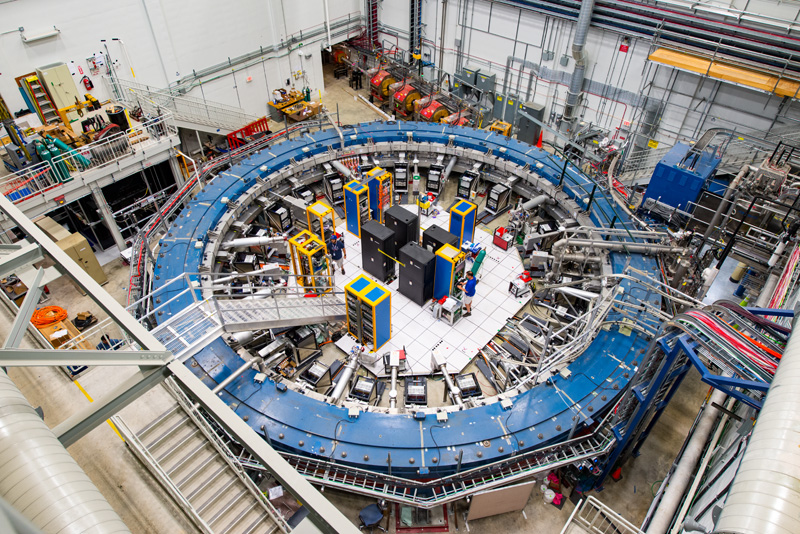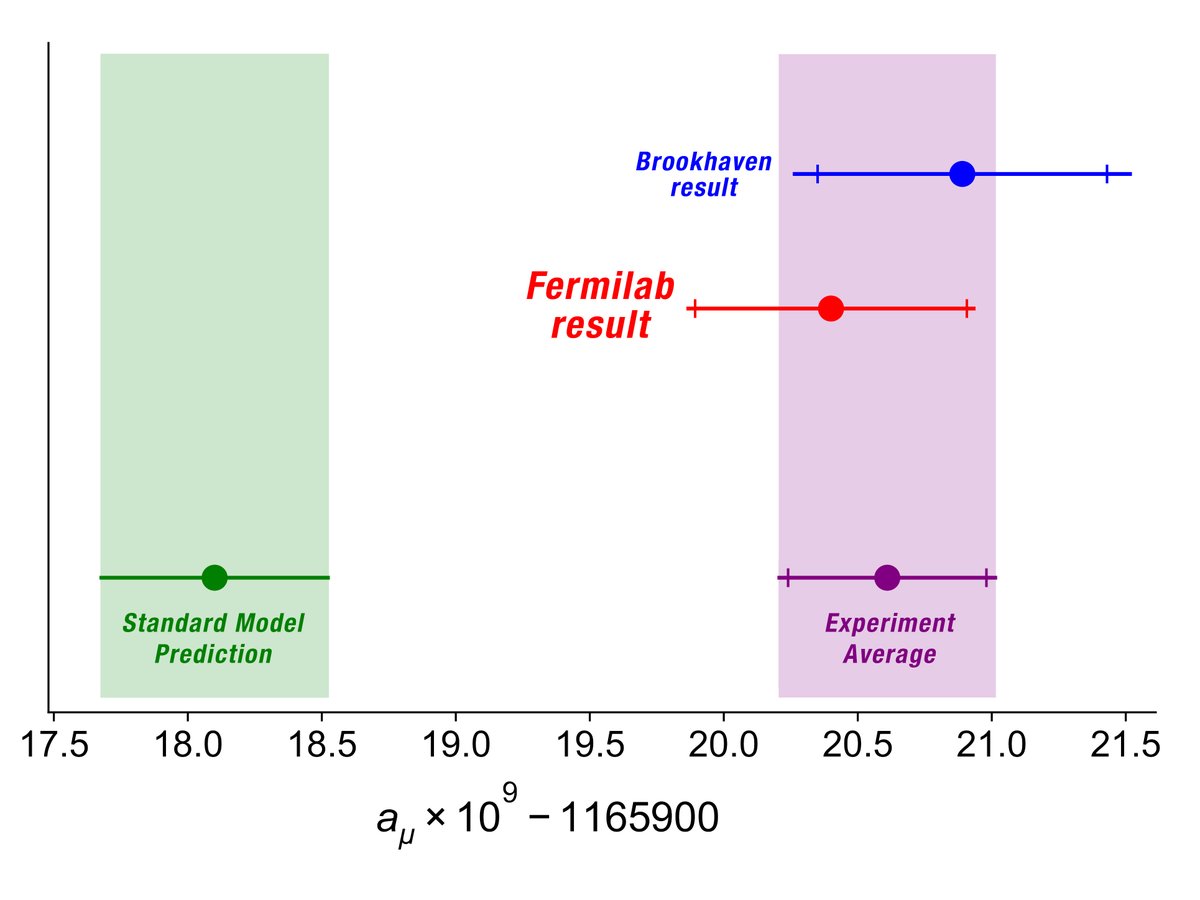
We're less than 24 hours away from learning the first results from the Muon g-2 experiment at Fermilab! #gminus2
theory.fnal.gov/events/event/f…



theory.fnal.gov/events/event/f…




Refresh your Muon g-2 knowledge before tomorrow's results seminar at 10am Central! Here's what Muon #gminus2 is looking for:
symmetrymagazine.org/article/the-my…
symmetrymagazine.org/article/the-my…
Muon g-2 is a blinded experiment. That means it used a secret code to obscure the result from the collaborators until the moment of unblinding. Here's how it works:
#gminus2
#gminus2
Muon g-2 will compare an experimental result to a theoretical calculation. Both are incredibly precise. Here's how theorists calculate g-2: symmetrymagazine.org/article/the-ma…
#gminus2
#gminus2
One crucial component for the Muon g-2 collaboration was creating a uniform magnetic field in their 50-foot-wide superconducting magnetic storage ring. Here's how they did it:
symmetrymagazine.org/article/prepar…
#gminus2
symmetrymagazine.org/article/prepar…
#gminus2
Who could forget the Muon g-2 magnet's big move? Travel back to June 2013, when this giant piece of equipment began its journey from @BrookhavenLab to Fermilab.
#gminus2
symmetrymagazine.org/article/june-2…
#gminus2
symmetrymagazine.org/article/june-2…

Find tons of fantastic footage and more information about the move on the Muon g-2 website: muon-g-2.fnal.gov/key-contributi…
#gminus2
#gminus2
Want to take a tour behind the scenes of the Muon g-2 experiment? This guided video tour is presented by one of the Muon #gminus2 collaborators:
You can also explore the Muon g-2 experiment on your own with our virtual 360 tour: 360.fnal.gov/vr/muong2/muon…
#gminus2 #science!



#gminus2 #science!




Make your official predictions! What do you think the first results from the Muon g-2 experiment at Fermilab will show? #gminus2
theory.fnal.gov/events/event/f…
theory.fnal.gov/events/event/f…
Only a few minutes to go, physics fans! How are you feeling? #gminus2
theory.fnal.gov/events/event/f…
theory.fnal.gov/events/event/f…
• • •
Missing some Tweet in this thread? You can try to
force a refresh





